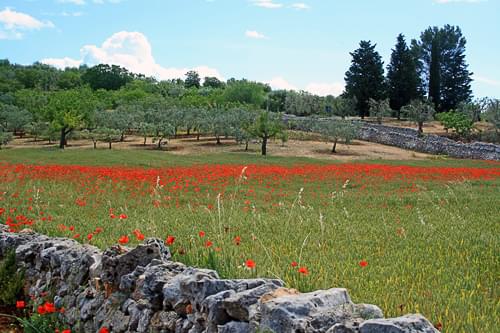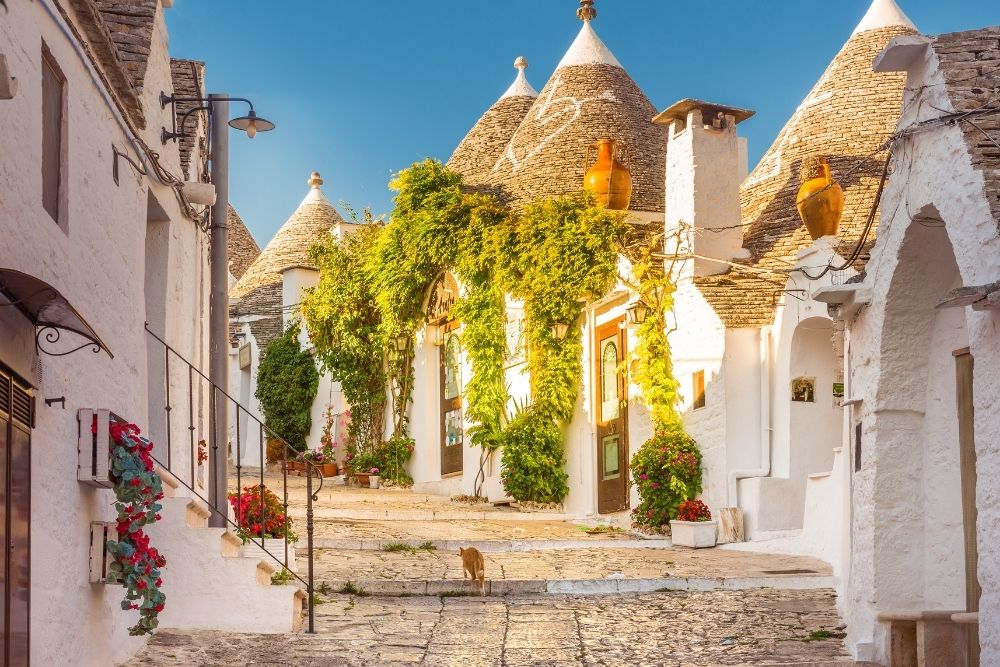
Ostuni
One of the prettiest towns in the Brindisi province of Puglia is Ostuni. This charming, fortified hill town is known as La Città Bianca (The White City) due to its whitewashed buildings and city walls which give it a very exotic feel, more Greek or Middle Eastern than Italian. The stark white of the town is broken up by some beautiful historical architecture, all of which stands out majestically from its surroundings.

Ostuni Cathedral - Photo: www.understandingitaly.com
The largest and most interesting buildings are:
The late 15th century cathedral
This is an impressive building which was built in the Gothic style. It has graceful lines, rich carvings and a beautiful doorway and rose window. It is rather cramped by the surrounding buildings which makes it difficult to view the full impact of its magnificent architecture.
The Bishop's Palace
Built around 1560 with a bridge connecting the palace to the cloisters of the cathedral.
The church of San Vito Martire
A very ornate building this church was built between 1750 and 1752 in the Baroque style. The outside is extremely ornate and the inside luxurious.

The Bishop's Palace- Photo: www.understandingitaly.com
In the centre of Piazza della Libertà is a statue of Sant'Oronzo placed on top of a 20m carved steeple. He is actually the patron saint of Lecce but he saved Ostuni from the plague in 1657 and the statue was built in his honour (and the hope that he would continue to fight off future plagues) in 1771.

Piazza della Libertà- Photo: www.understandingitaly.com
There is evidence to prove that Ostuni and its surrounding area have been inhabited since the Stone Age. It was originally created by a pre-classic tribe called the Messapii who at that time occupied most of what is now the region of Puglia. It was completely destroyed between 218 BCE - 201 BC by Hannibal during the second Punic War. It was later built up again by the Greeks and called 'Astu Néon' (meaning 'New Town') from which it is believed the name 'Ostuni' is derived.
Ostuni is in an enviable position; it is an interesting and lively town surrounded by beautiful countryside and is only 8km from the Adriatic Sea with its pristine beaches and warm climate. There is little wonder therefore that the main economic activity of the town is tourism. The surrounding countryside is very fertile and has a large grape and olive oil industry.

Surrounding countryside- Photo: www.understandingitaly.com
Ostuni is a delightful place to be. The narrow streets and alleyways provide endless hours of entertainment. You could just wander through them taking in the exotic atmosphere, sit in one of the many bars or restaurants or browse through the multitude of small, fascinating shops.

Ostuni- Photo: www.understandingitaly.com
Most of the streets are packed with artists selling local arts and crafts including ceramics, sculptures, carvings and paintings. The items being produced and sold are not cheap but are completely unusual works of art and well worth taking home to remind you of your stay in Ostuni.
Ostuni
Population: 31,710
Male: 15,023
Female: 16,687
Population density: 141.8 per square km
More information here







